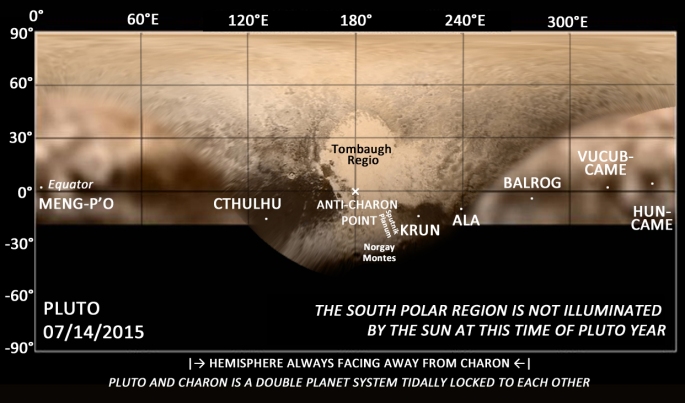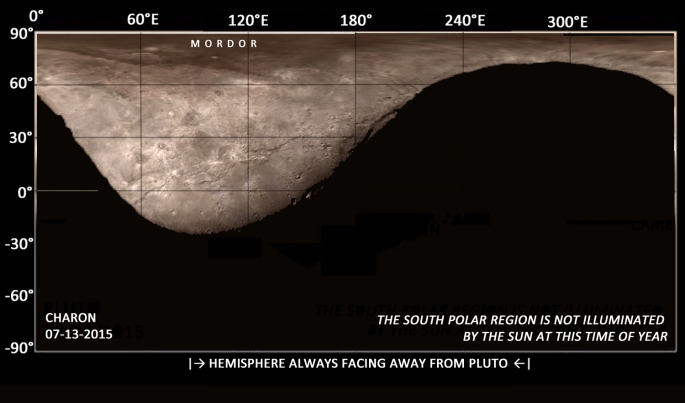Here is the latest map of Pluto, including latest imagery and informal names. We will update this map as new information is becoming available from the New Horizons team.
Pluto is a unique planet in that it always turns the same side towards its moon Charon, in other words, it is tidally locked to its Moon. No other planet in the Solar System is tidally locked it their moons, but all moons are tidally locked to their parent planets. This means that unlike other planetary maps, the map of Pluto has two distinct hemispheres: (1) the anti-Charon hemisphere that faces away from Charon (also called “Encounter Hemisphere” because it was illuminated when New Horizons flew by it.) and (2) the sub-Charon hemisphere where Charon is always visible (however, from New Horizons perspective, this is the “far side”).
The features named are all albedo features at this moment. These informally named features are named after underworld beings. For a full list of name themes, see here. Here is a list of all officially chosen future names.
Commemoration of the evil? An interesting debate emerged in social and news media whether underworld creatures should be commemorated in the planetary nomenclature – many people like the idea (here, here, here, here, although most talk about the sf-derived names). My favorite is, though, not Vader, but Nyami Nyami proposed for a future Styx feature.
When pronunciation matters. The name of its larger Moon, Charon, is also problematic in that although it is officially named after “the Greek mythological boatman who ferried souls across the river Styx to Pluto for judgement” (IAU), i.e., Kharon (greek), it was originally intended to be named after its discoverer’s wife, Charlene (Source). NASA’s New Horizons team members, with some exception, pronounce it as Sharon, which communicates that they regard it as named after Jim Christy’s wife.
“Because of this, as an acknowledgement of Christy and sometimes as an in-joke or shibboleth, the initial sh pronunciation is common among astronomers when speaking English, and this is the prescribed pronunciation at NASA and of the New Horizons team.” (Source)
This, however, is very problematic, because as a rule, planetary satellites cannot be named after their discoverers family members, and this kind of “shibboleth” practically approves some scientists right to do it so. So, a neutral pronunciation should definitely be Kharon.


